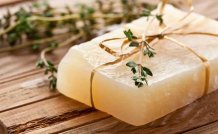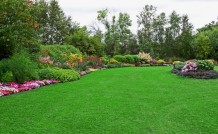Online Class: Acrylic Painting 101
Explore and expand your creative capabilities with this unique acrylic painting course. You'll learn everything there is to know about acrylics and you'll get to practice all the techniques and styles associated with each lesson and share your masterpieces with the instructor and classmates.

$70.00
no certificate
no certificate
- OR -
$95.00
with CEU Certificate*
with CEU Certificate*
Start Right Now!
$95.00 (with CEU Certificate)
Taking multiple courses? Save with our platinum program.
-
16Lessons
-
38Exams &
Assignments -
4,109Students
have taken this course -
14Hours
average time -
1.4CEUs
Course Description
Welcome to the world of acrylic painting, an art world full of versatility and bright, bold colors. Because acrylics are water based, it offers opacity (meaning you can paint right over your mistakes) that makes this medium especially appealing to beginners. On the other hand, experienced artists can take full advantage of the unique properties that acrylics offer and push the boundaries beyond their current artistic capabilities.
WHAT ARE ACRYLICS?
What exactly are acrylic paints? In scientific terms, acrylic paint is a pigment that is suspended in a binder of an acrylic polymer emulsion. In simple words, acrylics are liquid plastics. When acrylics dry, you can peel them right off your palette! Acrylics are water soluble and water is the vehicle for binding the paint. This is different from oil paints where the binder is Linseed oil or turpentine. The main advantage of acrylics being water soluble is the drying time. An acrylic painting can dry completely in less than an hour and even faster if you use something like a blow dryer, whereas oil paintings can take days to dry. Water is also very useful as a tool to help blend acrylic paints.
There are products on the market called acrylic retarders, which slow down the drying time. Retarders are made of glycerol or glycerin based products. These are useful when you have several colors of paint on your palette at the same time and want to spend a longer time at your canvas. The retarders also help to blend the paint much better on your canvas, as the paint is slow to dry because water evaporation decreases. Acrylic paints are so versatile and lend themselves to many styles of painting. Just like oils and watercolors, acrylics have their own set of characteristics and attributes. They are nontoxic and do not have any smell which makes them a great medium for children to work with. When painting with acrylics, you can create an amazing blend of vivid colors, or make the paint thick like impasto. When adding water and other mediums to the paint, you can make acrylics look thin and watery, like a watercolor painting.
The range of texture and effects that you can use with acrylics is endless. Even using simple products from around the house with acrylics such as sponges, saran wrap, tissue paper, or plastic forks all lend themselves to creating unique compositions. Another exciting quality about acrylics is that you can paint on just about any surface. Beside paper and canvas, acrylics can be painted on wood, glass, plastic, bricks, clothing, leather, or pottery. There are no limitations here. When a piece of art work is completed, you can cover it with a glossy, matte, or smooth finish. There is no need to put glass over your painting when framing. The possibilities of how to work with acrylics are endless.
- Completely Online
- Self-Paced
- Printable Lessons
- Full HD Video

- 6 Months to Complete
- 24/7 Availability
- Start Anytime
- PC & Mac Compatible
- Android & iOS Friendly
- Accredited CEUs

Course Lessons
Lesson 1. Introduction to Acrylic Painting
Welcome to the world of acrylic painting, an art world full of versatility and bright, bold colors.
210 Total Points
 Lesson 1 Video
Lesson 1 Video Lesson discussions: Favorite Style of Art Composition; Reasons for Taking this Course
Lesson discussions: Favorite Style of Art Composition; Reasons for Taking this Course Complete: Assignment 1
Complete: Assignment 1 Complete Assignment: What Do You Think?
Complete Assignment: What Do You Think? Assessment: Exam 1
Assessment: Exam 1
Lesson 2. That Glorious Paint
Acrylic paint comes in two different styles including student paint, and professional paint.
210 Total Points
 Lesson 2 Video
Lesson 2 Video Complete: Assignment 2A
Complete: Assignment 2A Complete: Assignment 2B
Complete: Assignment 2B Assessment: Exam 2
Assessment: Exam 2
Lesson 3. Selecting Other Supplies
Now that you have your paint, you need to obtain the rest of the supplies so you can begin painting.
110 Total Points
 Lesson 3 Video
Lesson 3 Video Complete: Assignment 3
Complete: Assignment 3 Assessment: Exam 3
Assessment: Exam 3
Lesson 4. COLOR ~ COLOR ~ COLOR
Color Sense, Color Blending, and Color Theory.
210 Total Points
 Lesson 4 Video
Lesson 4 Video Complete: Assignment 4A
Complete: Assignment 4A Complete: Assignment 4B
Complete: Assignment 4B Assessment: Exam 4
Assessment: Exam 4
Lesson 5. The Versatility of Acrylics
Acrylic paints have an amazing set of characteristics, one of which includes versatility.
210 Total Points
 Lesson 5 Video
Lesson 5 Video Complete: Assignment 5A
Complete: Assignment 5A Complete: Assignment 5B
Complete: Assignment 5B Assessment: Exam 5
Assessment: Exam 5
Lesson 6. Vocabulary, Texture, and Design
This lesson will help you with some terminology we have not yet discussed that you might come across as you pursue your skills.
Additional lesson topics: Abstract Acrylic Textured painting Demonstration by Millie Gift Smith; James Kruse Acrylic Drip Technique. Origins beginning, 36x24; Several Acrylic Painting Techniques with Chris Cozen; Wax resist painting: The Rainbow Fish; Debbie Arnold- Acrylic Texture with Plastic Wrap
210 Total Points
 Lesson 6 Video
Lesson 6 Video Complete: Assignment 6A
Complete: Assignment 6A Complete: Assignment 6B
Complete: Assignment 6B Assessment: Exam 6
Assessment: Exam 6
Lesson 7: Basic Painting
When you get out your paper and canvas, here are some things to think about before you start painting.
126 Total Points
 Lesson 7 Video
Lesson 7 Video Lesson discussions: Artistic Experience
Lesson discussions: Artistic Experience Complete: Assignment 7
Complete: Assignment 7 Assessment: Exam 7
Assessment: Exam 7
Lesson 8. Painting a Still Life
In this lesson we will talk about how to paint a still life.
210 Total Points
 Lesson 8 Video
Lesson 8 Video Complete Assignment: Assignnment 8A
Complete Assignment: Assignnment 8A Complete: Assignment 8B
Complete: Assignment 8B Assessment: Exam 8
Assessment: Exam 8
Lesson 9. Painting Landscapes and Seascapes
Painting scenery is probably the most common type of composition for artists. Nevertheless, like a still life, there are some important components to laying down a landscape.
110 Total Points
 Lesson 9 Video
Lesson 9 Video Complete: Assignment 9
Complete: Assignment 9 Assessment: Exam 9
Assessment: Exam 9
Lesson 10. Painting Animals and Portraits
The best way to paint an animal is to first pick what you want to paint and then break it down into sections.
110 Total Points
 Lesson 10 Video
Lesson 10 Video Complete: Assignment 10
Complete: Assignment 10 Assessment: Exam 10
Assessment: Exam 10
Lesson 11. Painting Abstracts
Many artists like to paint more freely, more informally. Perhaps they are attracted to the wide diversity of color and texture or want to be more creative with their expression of art. This is called non-representational or abstract art.
110 Total Points
 Lesson 11 Video
Lesson 11 Video Complete: Assignment 11
Complete: Assignment 11 Assessment: Exam 11
Assessment: Exam 11
Lesson 12. Creating Your Own Composition
An artist takes time, needs patience, and thoughtfully thinks about the paint, brushes, and the other tools necessary to be creative.
100 Total Points
 Lesson 12 Video
Lesson 12 Video Complete: Assignment 12
Complete: Assignment 12
Lesson 13. Creating Compositions Using Tools
Using the right tools make all the difference in how your art project will fare.
110 Total Points
 Lesson 13 Video
Lesson 13 Video Complete: Assignment 13
Complete: Assignment 13 Assessment: Exam 13
Assessment: Exam 13
Lesson 14. Mixed Media
In this lesson we will be discussing mixed media and variety of ideas on how to accomplish a piece of mixed media art.
110 Total Points
 Lesson 14 Video
Lesson 14 Video Complete: Assignment 14
Complete: Assignment 14 Assessment: Exam 14
Assessment: Exam 14
Lesson 15. Moving Forward
For this lesson, let us discuss the final touches.
200 Total Points
 Lesson 15 Video
Lesson 15 Video Lesson discussions: Challenges
Lesson discussions: Challenges Complete: Assignment 15A
Complete: Assignment 15A Complete: Assignment 15B
Complete: Assignment 15B
Final Exam
Final Exam
240 Total Points
 Lesson discussions: Let us know what you think of this course; Program Evaluation Follow-up Survey (End of Course); Course Comments
Lesson discussions: Let us know what you think of this course; Program Evaluation Follow-up Survey (End of Course); Course Comments Complete Assignment: Your Rules
Complete Assignment: Your Rules Complete Assignment: FINAL THOUGHTS
Complete Assignment: FINAL THOUGHTS Assessment: Final Exam
Assessment: Final Exam
2586
Total Course Points
Learning Outcomes
By successfully completing this course, students will be able to:
- Describe and define what acrylic painting is.
- Identify the supplies you need for acrylic painting.
- Demonstrate understanding of how to work with color in acrylic painting.
- Summarize the versatility of acrylics.
- Summarize vocabulary, texture, and design.
- Demonstrate basic painting techniques.
- Demonstrate painting a still life.
- Demonstrate painting landscapes and seascapes.
- Demonstrate painting animals and portraits.
- Demonstrate painting abstracts.
- Demonstrate creating compositions using tools.
- Demonstrate mastery of lesson content at levels of 70% or higher.
Additional Course Information

- Document Your Lifelong Learning Achievements
- Earn an Official Certificate Documenting Course Hours and CEUs
- Verify Your Certificate with a Unique Serial Number Online
- View and Share Your Certificate Online or Download/Print as PDF
- Display Your Certificate on Your Resume and Promote Your Achievements Using Social Media

Course Title:
Acrylic Painting 101
Course Number:
8900321
Lessons Rating:
4.6 / 5 Stars
(2,024 votes)
Languages:
English - United States, Canada and other English speaking countries
Category:
Availability:
This course is online and available in all 50 states including: California, Florida, Georgia, Illinois, New York, Pennsylvania, Ohio, Texas, and Washington.
Last Updated:
August 2022
Course Type:
Self-Paced, Online Class
CEU Value:
1.4 IACET CEUs (Continuing Education Units)
CE Accreditation:
Universal Class, Inc. has been accredited as an Authorized Provider by the International Association for Continuing Education and Training (IACET).
Grading Policy:
Earn a final grade of 70% or higher to receive an online/downloadable CEU Certification documenting CEUs earned.
Assessment Method:
Lesson assignments and review exams
Instructor:
Nancy Fillip
Syllabus:
View Syllabus
Course Fee:
$95.00 U.S. dollars
Choose Your Subscription Plan
Course Only
One Course
No Certificate / No CEUs
No Certificate / No CEUs
$70
for 6 months
Billed once
This course only
This course only
| Includes certificate | X |
| Includes CEUs | X |
| Self-paced |

|
| Instructor support |

|
| Time to complete | 6 months |
| No. of courses | 1 course |
Certificate Course
One Course
Certificate & CEUs
Certificate & CEUs
$95
for 6 months
Billed once
This course only
This course only
| Includes certificate |

|
| Includes CEUs |

|
| Self-paced |

|
| Instructor support |

|
| Time to complete | 6 months |
| No. of courses | 1 course |
Platinum Yearly
ALL COURSES
Certificates & CEUs
Certificates & CEUs
$189
per year
Billed once
Includes all 600+ courses
Includes all 600+ courses
| Includes certificate |

|
| Includes CEUs |

|
| Self-paced |

|
| Instructor support |

|
| Time to complete | 12 Months |
| No. of courses | 600+ |
Platinum 2 Years
ALL COURSES
Certificates & CEUs
Certificates & CEUs
$299
for 2 years
You save $79.00!
Billed once
Includes all 600+ courses
Includes all 600+ courses
| Includes certificate |

|
| Includes CEUs |

|
| Self-paced |

|
| Instructor support |

|
| Time to complete | 24 Months |
| No. of courses | 600+ |
Student Testimonials
- "The instructor was so knowledgeable and it was great to have her share her own and others artwork. I loved all of her suggestions to keep it fun and it was." -- Madeleine A.
- "Instructor Fillip was very helpful with her critique of my paintings. Her feedback was always done promptly and in a timely manner." -- Nancy S.
- "I really enjoyed my first ever online class! I cannot wait for the next one which I have already started on which is how to draw and I am glad that I have the same instructor. She is very clear and I look forward to working with her." -- Sandra M.
- "I loved the instructor she was clear in her explanations and she is very motivating." -- Astrid L.
- "I thoroughly enjoyed this course and the instructor was great!" -- Geraldine N.
- "She gave positive criticism that was very useful." -- Tamara S.
- "I enjoyed the art course and the instructor. The instructor was very nice with her time regarding any of my questions or requests." -- Doreen F.
Related Courses
-
 30 hours
3.0 CEUs
Cooking Class Bundle: 5 Cooking Courses
$120.00
30 hours
3.0 CEUs
Cooking Class Bundle: 5 Cooking Courses
$120.00
-
 14 hours
1.4 CEUs
Acrylic Painting 101
$95.00
14 hours
1.4 CEUs
Acrylic Painting 101
$95.00
-
 8 hours
0.8 CEUs
Digital Photography 101
$95.00
8 hours
0.8 CEUs
Digital Photography 101
$95.00
-
 7 hours
0.7 CEUs
Soap Making 101
$95.00
7 hours
0.7 CEUs
Soap Making 101
$95.00
-
 7 hours
0.7 CEUs
Understanding Learning Styles
$95.00
7 hours
0.7 CEUs
Understanding Learning Styles
$95.00
-
 17 hours
1.7 CEUs
Mixed Media Art
$95.00
17 hours
1.7 CEUs
Mixed Media Art
$95.00
-
 4 hours
0.4 CEUs
Knitting 101
$95.00
4 hours
0.4 CEUs
Knitting 101
$95.00
-
 4 hours
0.4 CEUs
How to Bake Cookies
$95.00
4 hours
0.4 CEUs
How to Bake Cookies
$95.00
-
 9 hours
0.9 CEUs
Watercolor Painting 101
$95.00
9 hours
0.9 CEUs
Watercolor Painting 101
$95.00
-
 6 hours
0.6 CEUs
Pie Baking 101
$95.00
6 hours
0.6 CEUs
Pie Baking 101
$95.00
-
 11 hours
1.1 CEUs
Cooking and Baking 101
$95.00
11 hours
1.1 CEUs
Cooking and Baking 101
$95.00
-
 17 hours
1.7 CEUs
Photography 101: Beginner to Intermediate
$95.00
17 hours
1.7 CEUs
Photography 101: Beginner to Intermediate
$95.00
-
 9 hours
0.9 CEUs
Landscaping 101
$95.00
9 hours
0.9 CEUs
Landscaping 101
$95.00
-
 5 hours
0.5 CEUs
Bread Baking 101
$95.00
5 hours
0.5 CEUs
Bread Baking 101
$95.00
-
 15 hours
1.5 CEUs
Western Calligraphy
$95.00
15 hours
1.5 CEUs
Western Calligraphy
$95.00
-
 10 hours
1.0 CEUs
Sewing 101
$95.00
10 hours
1.0 CEUs
Sewing 101
$95.00
-
 6 hours
0.6 CEUs
Etiquette Consultant
$95.00
6 hours
0.6 CEUs
Etiquette Consultant
$95.00








